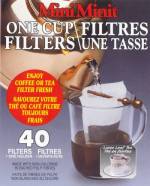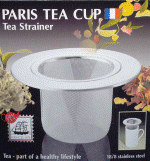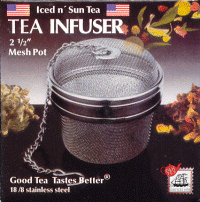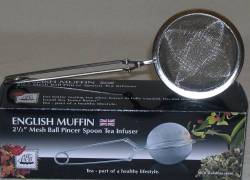Tea and Brewing
After water, tea is the most consumed beverage in the world. It is drunk hot, cold, plain, with sugar, and/or milk, with the exception of the Himalayans who enjoy their tea with yak butter. Tea stimulates you in the morning, revives you in the afternoon, and relaxes you for bedtime. Since there are thousands of varieties of tea to choose from, a type of tea is available for any special need or taste to suit you for anytime or occasion.
Black, green, white, oolong or yellow all tea comes from one plant, Camellia sinensis.
Camellia sinensis is an evergreen bush grown in tropical climates that provide a combination of hot and cool temperatures and heavy rainfall. Tea plants can be grown at sea level, but the best tea comes from plants that are cultivated at altitudes between 3000 and 7000 feet. Tea bushes can grow to 50 feet or higher.
The quality, flavor, and aroma of tea is influenced by the growing conditions. Soil, climate, temperature, rainfall, and altitude all contribute to the unique characteristics of each plant. For example, the sweet taste of Milk Oolong comes from a sudden shift in temperature of the Wuyi Mountains in China during the harvest period.
More than 2000 varietals, or subspecies, of the tea plant exist in the many growing regions, resulting in thousands of teas, each with unique characteristics. The popular regions are China, Japan, India, Sri Lanka, Kenya and Nepal. Tea sold as "single estate" is when the tea comes from only one garden. Blended tea contains two or more types of tea leaves from different estates, regions, or countries that are combined to make a new tea. Flavored teas are combined with natural or artificial flavors like mint, spices, honey, herbs and fruit.
Tea is harvested by hand using a plucking system. Tea pluckers are usually women who wear large baskets upon their backs picking the tea leaves according to the quality of tea being produced. Most teas consist of picking the top two leaves and the bud. Most white teas are produced by picking just the top leaf and bud.
Now that the leaves are picked, they are sent to be processed. Following are the steps black tea undergoes before becoming ready to consume:
The first stage consists of spreading the fresh picked leaves on a mesh screen to dry for up to twenty-four hours. This reduces the moisture content of the leaves allowing them to become soft enough to roll. The leaves are them rolled by hand to release their oil. The rolled leaves are placed on mats and sorted into different grades. The sorting in based on rather the leaves are whole, broken, or have become dust. The dust in what is used to make teabags. Oxidation is the fourth stage of the process. The rolled leaves are place in a humid temperature controlled room for one to three hours. The temperature must be kept between 72 and 82 degrees. If the temperature is too hot, the tea will have a burnt taste; too cold and the leaves will not be able to oxidize. Only a skilled tea maker is able to judge rather or not the tea has oxidized fully. The last stage is to dry the leaves in hot pans or drying machines. This stops the oxidation process and the tea can then be packaged and shipped.
Following are some various black teas that are produced following the above steps. These are just a few black teas available.
Assam Teas These teas are grown in the Assam Valley of India. To the far north east of India is the state of Assam, known for the one-horned rhino and the Brahmaputra river. Along both sides of this mighty river lie the rolling plains of the world's largest tea growing area along with the highest yield per acre. Assam is the birthplace of India tea as discovered by Robert Bruce in 1823.
Assam teas have a first flush, second, and Autumnal flush. The first flush has a rich and fresh aroma; the second flush produces the famous "tippy" teas. It is this feature of the teas of the second flush that make them more popular. (Tippy refers to black tea with gold tips or what appears to be golden-colored leaf). The amount of tip will vary dependent upon where in Assam the estate from which the tea comes is located. Additionally, not all tea estates have the ability or capacity to produce these "tippy" teas. An examples of an Assam "tippy" tea is Hunwal. The golden tip present in Assam tea lessens the astringent characteristic of the tea and make it sweet and smooth. Therefore, Assam tea can be malty, as well as sweet and smooth. These are qualities that all tea drinkers enjoy!
Darjeeling Teas These teas are grown in the Darjeeling Province of India at 6,562 feet above sea level and is nestled in the foothills of Himalayan Mountain Range. This picturesque setting contains 42,008 acres of tea bushes (according to the Tea Board of India) producing the exquisite Darjeeling tea that is unequalled anywhere in the world.
The cool and moist climate, the soil, the rainfall and the sloping terrain all combine to give Darjeeling its unique "Muscatel" flavor and exquisite bouquet. The combination of natural factors that gives Darjeeling tea its unique distinction is not found anywhere else in the world, hence this finest and most delicately flavored of all teas has over the years acquired the reputation of being the "Champagne of Teas."
These high quality teas are full bodied, yet delicately flavored. Yields are very low for Darjeeling teas, since planters do not give up quality for quantity. They work had to maintain consistency year after year.
Ceylon Teas These teas are grown in five different growing districts in Sri lanka. The high grown district districts are Dimbula, Nuwara Eliya, and Uva. Teas grown in these areas of 4000 above sea level tend to be light and flavory. Kandy is the medium growing district of 2000-4000 feet and produces teas with a malty fullness and floral notes. The low growing district of Ruhunu is under 2000 feet. Teas grown in this area are full bodied with lots of flavor.
China Black Teas Tea has been a staple in China and Taiwan for more than 2000 years. In Chinese society there are historical, legendary and religious connotations associated with tea. The best known China black tea is Keemun with its rich aroma and complex taste. Keemun if stored properly will keep for many years.
Yunnan has a very distinctive appearance. The leaf is very tippy with more than half of the leaf being a light tan color blending into black. This tea has a full bodied taste with subtle sweetness.
Scented teas from China should not be confused with flavored teas that get their taste from flavoring oils, waters, and crystals. These teas are scented using Jasmine flowers, rose petals, and lichee fruit.
Green Tea Green tea is from the same plant as (Camellia sinensis.) as all other teas. After the tea leaves are plucked and sorted, they are either steamed or pan fired. Green tea does not go through the oxidation (fermentation) process. Green tea does have less caffeine than black tea. The leaves are often rolled into different shapes before drying. Sencha tea is rolled into fine strands, while gunpowder tea leaves are rolled into pellets. Many Chinese green teas are painstakingly shaped and tied. Once the leaves are shaped, they are dried and packaged. Green tea also has HGCG; the most powerful antioxidant known. This can only be found in green tea.
Oolong Tea Oolong tea, like black tea goes through a withering stage (wilting). The difference is the oolong tea, goes through a shorter stage and the leaves are fired directly after that to prevent continued oxidation (fermentation.) The leaves can range from being almost black to dark green depending on when oxidation is stopped. The longer the leaves are oxidized the closer to black tea they will become. Formosa Oolong is an Amber Oolong with a rich amber cup that is a little toasty tasting.) Se Chung leaves are not allowed to oxidize as long, so the leaves have a dark green appearance and produce a light yellow cup with hints of sweetness.
White Tea White tea is the least processed tea. The leaves are picked early in the year while the tiny white hairs are still visible on the leaves and the bud is still closed. Only the top leaf and a bud are picked from the plant. The leaves are then allowed to dry in the sun; they are not steamed or pan fired like green tea. If mechanical drying is required for a white tea, they are baked. This produces a light cup usually a very pale yellow with a light and lightly sweet taste.
Storing and Brewing Tea Purchasing high quality tea is a waste of money if it is not brewed properly. Tea is brewed according to the type and taste of the person. Following are guidelines for brewing a good cup of tea. Depending on how strong you like you cup of tea depends on the brewing time and temperature. Use the provided information and adjust to your individual taste.
Storing Tea Air, light, heat, and moisture are the four enemies of tea. It will lose its flavor and aroma quickly if not stored properly. If you plan on using the tea you have purchased within a week or two, investing in a quality container will keep most teas fresh for up to a year. The best type of container is ceramic canister with a rubber trimmed latch. These containers are airtight when latched and will prevent any other odors from permeating your tea.
The ceramic canisters can be a little pricey, so a good alternative would be a pry top tin. These are usually double lidded and will protect your tea purchase. The tins come in a variety of colors and designs to fit into most decors.
If stored in a proper container, black and oolong teas should keep well over a year. Green tea however lose their qualities faster and should be used within a six to twelve month period.
Many Keemun teas actually improve with age.
Brewing To brew a perfect cup of tea just follow these 4 simple steps.
1. Preheat the teapot by filling with hot water. Be sure to pour the hot water out of the pot before adding the tea leaves.
2. Add one teaspoon of tea leaves per cup. You may need to add more depending on your personal taste.
3. If brewing black or oolong tea; bring fresh, cold water to a boil and pour it over the leaves. If brewing white or green tea, use water that is just starting to boil (tiny bubbles), since these tea leaves are more delicate than black leaves and can burn if boiling water is poured on them.
4. Infusion times: May need to be adjusted according to taste
Black tea: 3-5 minutes; Green tea: 2-3 minutes; White tea: 2-3 minutes; Oolong tea: 3-5 minutes; Fruit and Herb Blends: 5-7 minutes
If your cup of tea taste bitter or harsh it may have been over brewed.
Brew One Cup of Tea at a Time Brewing one cup of tea is made quick and easy with filters, mesh spoons, and tea balls.




Brewing Iced Tea from loose tea leaves Iced tea is the number one way tea is enjoyed in the United States. Brewing great iced tea from loose tea leaves is simple when you follow these instructions.
1. Determine the amount of iced tea that you will be making; for our example we will use a two quart (64oz) pitcher.
2. Fill the pitcher three-quarters of the way with ice.
3. Use a brewing pot that is a little more than half the size of the pitcher to make the tea concentrate. We use a 47oz brewing pot for our 64oz pitcher. It is necessary to concentrate the tea because we will be straining the tea into the pitcher with ice to dilute it and cool it quickly.
4. Use one level teaspoon of tea for every 8oz cup of the finished iced tea. We use 9 teaspoons in the brewing pot follow the same brewing times listed above for the type of tea being brewed.
5. Strain the tea into the pitcher with the ice to dilute.
We recommend the following teas for icing:Fruit Teas- All fruit blends are suitable for icing
Most flavored Black teas will ice well - Choose based on your taste
Formosa Oolong and Orange Blossom Oolong make nice iced teas.
Ceylon teas are excellent iced with their subtle sweetness.
Tarajulie and Hunwal teas from Assam, India make excellent iced tea for those who enjoy iced black tea.
Peach Green, Sencha, Strawberry Fields, Sencha Cherry Rose, Lemon Green, Mint Green brew a nice ice tea.
